How High to Hang Curtains – Elevating Elegance
This post may contain affiliate links. We may earn a small commission from purchases made through them, at no additional cost to you.
Welcome to the whimsical world of curtain hanging heights! If you’ve ever wondered whether your curtains should touch the floor or hover just above the window sill like a friendly neighbor, you’re in the right place. As an interior design aficionado, I’m here to unravel the mystery behind the perfect curtain elevation. From grandiose drapes cascading to the ground to playful cafe curtains flirting with the sunlight, let’s explore the delightful dance between fabric and floor, and discover the magic of hanging curtains just right!
Key Takeaways
- Curtains impact a room’s style and light control, so proper placement is key.
- The standard is to hang curtains four to six inches above the window frame.
- Adjust rod height for unique window shapes to maintain a tailored look.
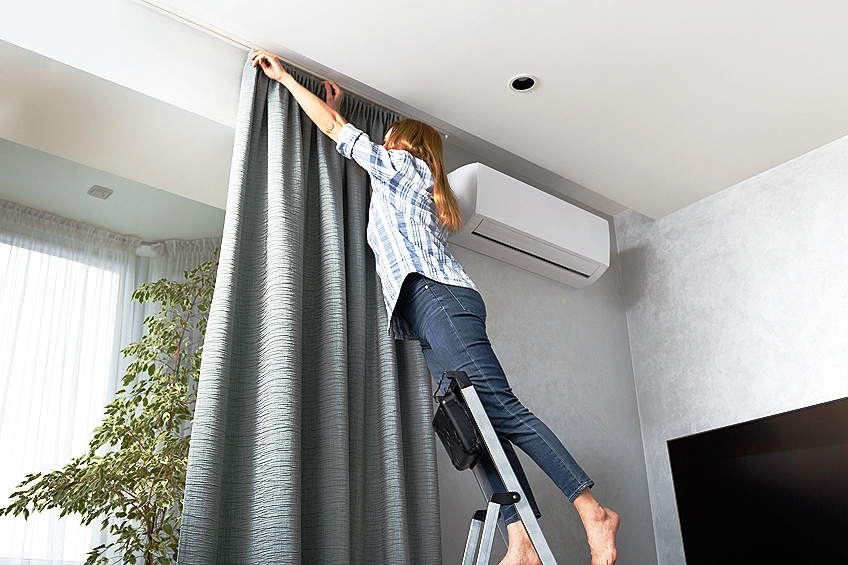
How High Should I Hang My Curtains?
The placement of curtains within any space is not only a matter of style but also practicality. Curtains can alter both the perception and reality of a room’s dimensions, influence the amount of natural light entering the space, and contribute to the overall aesthetic and feel. Correct curtain height is essential for creating the desired impact, be it making ceilings appear higher or giving windows a refined look.
An understanding of how high to hang curtains will allow one to effectively enhance the ambiance and function of their living or working space.
Hanging curtains at the right height requires a balance between design rules and the unique characteristics of the room. The process begins with a consideration of the ceiling height and window dimensions. While the general rule suggests hanging curtain rods four to six inches above the window frame, adjustments may be necessary to cater to distinctive window shapes or to achieve specific style objectives. Properly installed curtains contribute to a polished interior design, providing both a sense of grandeur and tailored sophistication.
Why Does Height Matter?
The height at which curtains are hung can visually alter the perception of a room’s size and shape. Curtains set at the correct elevation are key to creating an elegant, proportionate look, while simultaneously maximizing the functional benefits of the draperies.
- Visual height: Hanging curtains 4 to 6 inches above the window frame can make the window appear taller, enhancing the room’s sense of spaciousness.
- Ceiling appearance: If there is a larger gap between the window frame and the ceiling—6 to 12 inches—centering the curtain rod between the two can create a sense of height, making the ceiling seem higher.
- Standard practice: For average ceiling heights, a common practice is installing the curtain rod about 6 inches above the window frame, aligning well with both function and design considerations.
- Room proportions: Especially in rooms with high ceilings, placing the curtains even higher than the standard 6 inches can help to balance the proportions, drawing the eye upward and making the space feel grander.
Incorporating these specifics into curtain placement will ensure a room that feels well-composed and designed with intention.
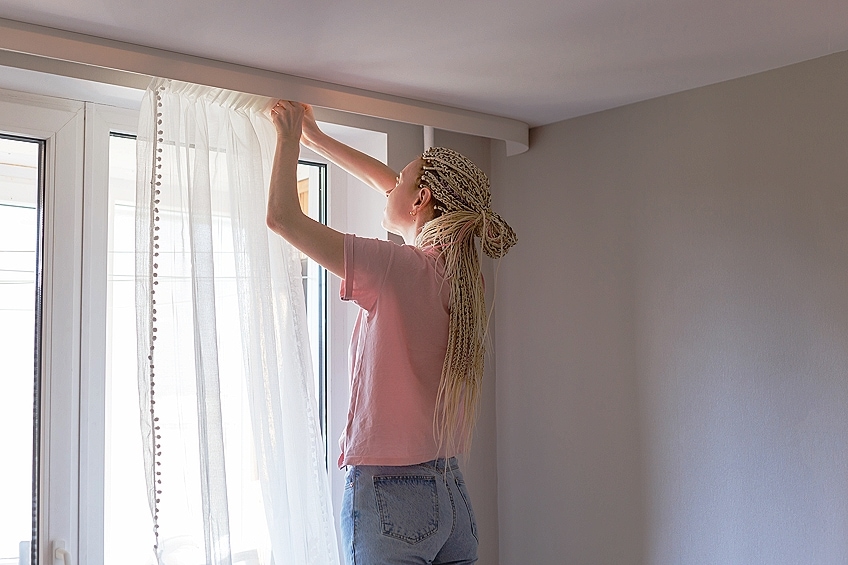
The General Rule for Curtain Height
In the realm of interior design, achieving the perfect balance is key when it comes to hanging curtains. Following a simple yet effective guideline, designers often recommend positioning the curtain rod approximately 4 to 6 inches above the window frame, granting the room an illusion of heightened space. To ensure practicality and fluid movement, it’s wise to leave at least 2 inches of clearance between the rod and the window trim. With these straightforward principles in mind, your curtains will effortlessly elevate both your space and style. When it comes to visual impact, the height at which curtains are hung can work wonders for a room’s aesthetic.
Opting to suspend curtains closer to the ceiling can lend an air of elegance and height to the space, creating a visually expansive atmosphere.
A widely endorsed technique involves extending the curtain rod 8 to 12 inches beyond each side of the window frame. This thoughtful approach ensures that when drawn, the curtains fully envelop the window, seamlessly blending privacy and sophistication into your interior design scheme.

When customizing curtain height to suit the room, consider the ceiling’s dimensions. For standard 8-foot ceilings, adhering to the 4 to 6-inch guideline typically achieves a balanced look. However, in spaces with higher ceilings, raising the curtains further can maintain pleasing proportions and enhance the room’s overall aesthetic appeal. Remember, this guideline serves as a foundation, but adjustments can be made to accommodate specific design preferences or functional needs within a space.
Determining the Correct Curtain Length and Position
Properly hung curtains enhance a room’s aesthetic, control light, and add a sense of height. Paired with the correct length and position, they can transform a space.
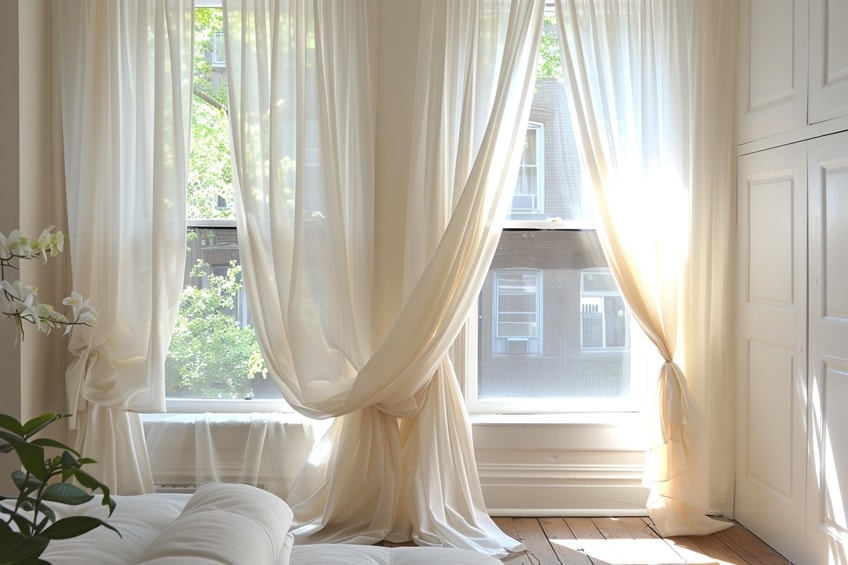
Assessing Window Dimensions
Measuring the window frame precisely is the first step. It dictates where the curtain rod should be placed, which in turn influences the curtain’s length. Curtain rods are typically positioned 3 to 6 inches beyond the sides of the window frame. This extension allows for greater fullness of the curtains when open.
- Width: Record the width of the window frame.
- Height: Measure from where the rod will be placed (options range from just above the window frame to ceiling level) to the desired endpoint of the curtains.
Choosing Curtain Length
The ideal curtain length ensures a tailored look that complements the room’s design. Curtains can either lightly kiss the floor, hover half an inch above, break at the floor up to an inch, or puddle if extra fabric is desired for a more traditional look.
- Floor-length: Curtains should graze the floor or have a slight break.
- Above-the-floor: A precise hem to stop half an inch above the floor is suitable for high-traffic areas.
- Puddling: Additional fabric can puddle on the floor for a luxurious feel.

Window Treatment Styles and Functions
The style of a window treatment relates not just to aesthetics but function as well. Blackout curtains offer room-darkening benefits, ideal for bedrooms, while sheers provide privacy without sacrificing light. The chosen style impacts the fullness and hem of the curtains.
- Fullness: Aim for curtains to have 2 to 2.5 times the width of the window for proper fullness when closed.
- Hem styles: Shorter hems for everyday use, longer hems can signify formality and luxury.
- Functionality: Consider the curtain’s function—privacy, light control, insulation, or purely decorative.
Installing Curtain Hardware
Installing the proper curtain hardware is essential to enhance both the functionality and aesthetics of your window coverings. It requires precise measurements, careful selection of materials, and a clear installation process to ensure your curtains hang correctly and operate smoothly.

Selecting the Right Curtain Rods
When choosing curtain rods, consider the size and style of the window, as well as the weight of the curtain material. Rods come in various materials, such as wood, metal, or plastic, and should complement the room’s décor. For a larger window, a thicker rod may be necessary for added strength, ensuring it can support the weight of the drapery without sagging.
Accurate Measurements and Tools
Measure the width of the window and add 3-6 inches on each side to allow for maximum light exposure and privacy when the curtains are open. The rod should typically be mounted 4-6 inches above the window frame, creating an illusion of a taller ceiling. Use a tape measure, a pencil to mark the placement, a level to ensure evenness, and a stud finder to locate the studs for secure bracket installation. Have a ladder handy for high placements, and double-check your measurements before drilling. The tools you will need include:
- Tape measure
- Pencil
- Drill
- Level
- Stud finder
- Ladder
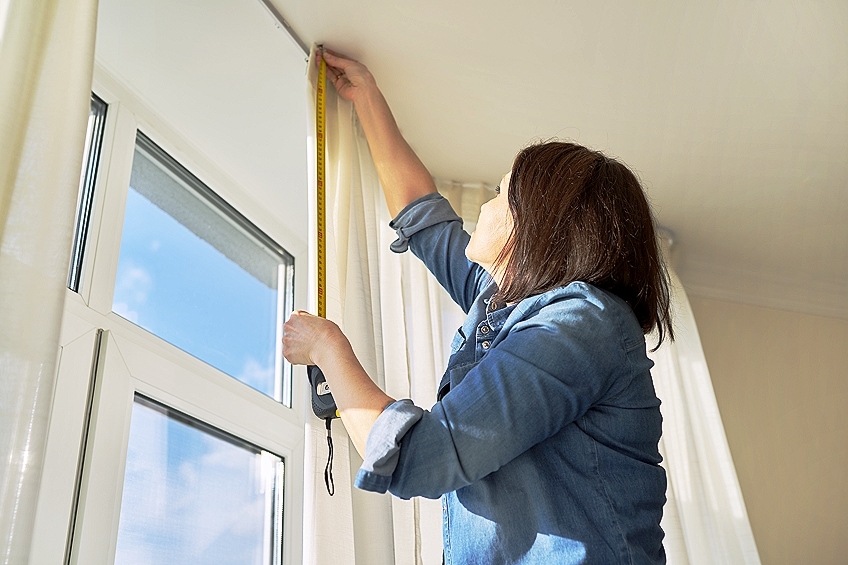
Step-by-Step Installation Guide
Embarking on the journey of hanging curtains brings both creativity and practicality to your space. With a few key tools and a touch of precision, you can transform your windows into stunning focal points. Let’s dive into the step-by-step installation guide to help you achieve curtains that not only frame your view but also enhance your room’s ambiance.
- Measure the desired height above the window frame and the extension beyond the window width.
- Mark the bracket placement with a pencil, ensuring marks are level and aligned with your measurements.
- Drill pilot holes for the screws or insert wall anchors if studs aren’t present.
- Attach the brackets with screws, double-checking for stability.
- Place the rod onto the brackets and ensure it’s level.
- Hang the curtain panels, ensuring they have the proper length to reach the floor or desired stopping point.
- Adjust the curtains to sit evenly and operate the open and close function to test the setup.
By following these guidelines, you can achieve a professional-looking installation that elevates the overall room design while maintaining functionality.
Curtain Height for Unusual Window Shapes
When it comes to interior design, every window shape presents its own unique charm and challenges. From bay windows to arched or angled frames, choosing the right curtain height is crucial for accentuating their distinct features. When addressing unusual window shapes, one must consider curtain height as a strategic element not only for aesthetics but also to influence perceived room proportions. Let’s explore how to navigate the world of curtain height for unusual window shapes, ensuring both style and functionality harmonize seamlessly in your space.
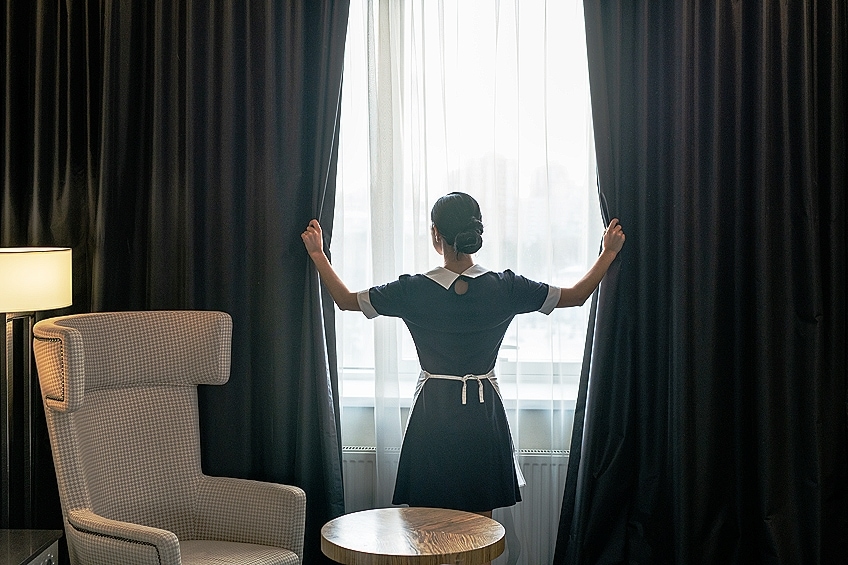
How to Use Curtain Height to Make a Ceiling Seem Higher
To create the illusion of a higher ceiling, hang curtains as close to the ceiling line as possible. This draws the eye upward along the length of the curtain, making the ceiling appear loftier. For windows with an arch or other atypical shapes at the top, one should extend the curtain rod past the window’s widest or highest point, thus ignoring the irregularity for a cleaner line.
How High to Hang Curtains When Ceilings Are Very High
With very high ceilings, it’s advisable to maintain a sense of proportion by hanging curtains approximately 4 to 6 inches above the window trim. This approach maintains a balanced look without the curtains appearing disconnected from the window. However, for dramatic effect and to keep a cohesive look in rooms with exceedingly tall ceilings, one might consider positioning the curtain rods even higher, aligning them more closely with the upper portion of the wall.

And there you have it, fellow decorators and curtain connoisseurs! As we draw the final curtain on our exploration of hanging heights, remember that the art of interior design is as much about intuition as it is about rules. Whether you opt for the dramatic sweep of floor-length drapes or the playful charm of sill-skimming cafe curtains, let your personal style shine through. So go forth, adjust those rods, and let your living spaces sing with the whimsy and wonder of perfectly hung curtains! After all, in the world of design, there’s no such thing as too high or too low—just the joy of finding your own unique flair. Happy decorating!
Frequently Asked Questions
What Is the Ideal Height Above a Window to Install a Curtain Rod?
The ideal height for installing a curtain rod above a window frame is 4 to 6 inches. This placement can visually enhance the size of the window and elevate a room’s aesthetic.
Should You Hang Curtains As High As Possible?
While hanging curtains higher can create an impression of taller windows and a more spacious room, it is not always necessary to place them as high as possible. It is recommended to install curtain rods about 10 to 12 inches above the window frame for optimal visual effect, especially if the ceilings are high.







